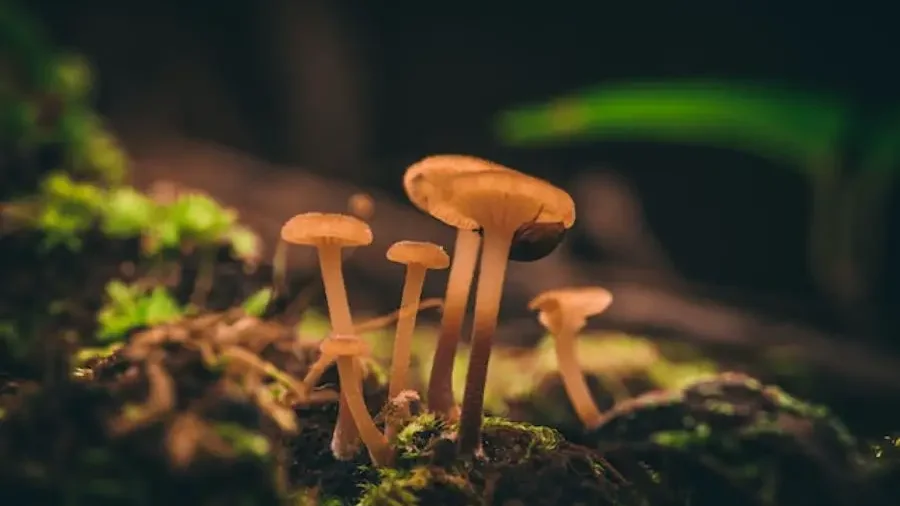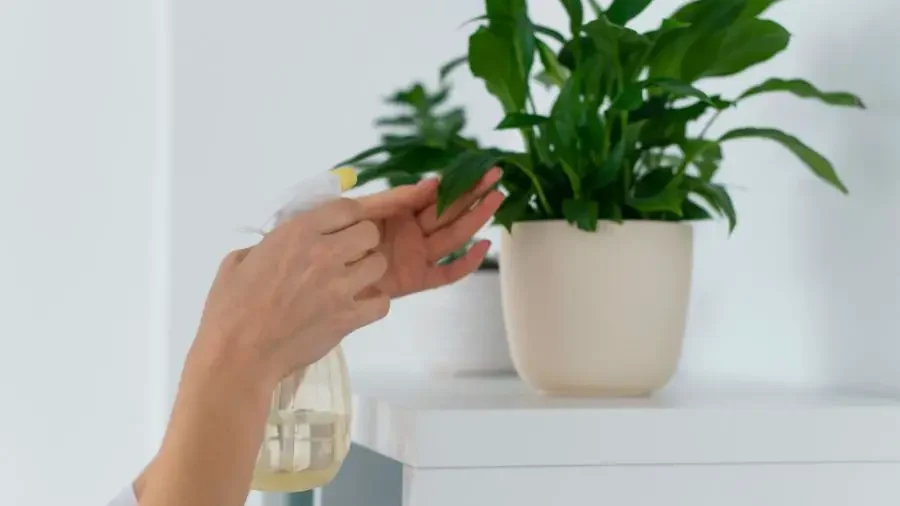Brown Mushroom Growing In Potted Plants [Solved]

Brown mushrooms growing in your potted plant can be unsightly and potentially harmful to the plant.
These mushrooms, also known as “fungal fruiting bodies,” are a common problem in indoor gardening.
Mushrooms are a type of fungus that can be found in many different environments, including potted plants.
While some mushrooms are beneficial to the plant, others can be detrimental.
In this article, we’ll discuss how to identify and remove brown mushrooms from your potted plants, as well as steps you can take to prevent them from returning.
Causes of Brown Mushroom in Potted Plants
Brown Mushrooms grow in potted plants as a result of fungal spores that are present in the soil or air.
These spores can germinate and grow in the presence of moisture and organic matter, such as plant debris or potting mix.
If you’re seeing brown mushrooms in your plants, it’s likely due to issues such as improper watering, inadequate sunlight, and soil composition.
Here are the various factors that cause the growth of brown mushrooms and how to prevent them.
Overwatering
One of the main causes of brown mushrooms in potted plants is overwatering. When a plant is overwatered, the soil remains wet for long periods of time.
The fungus thrives in humid environments. The excess water, therefore, creates a humid environment.
So, ultimately the moist soil provides the ideal conditions for the fungi to reproduce and feed on the roots of the plants, causing damage and potentially killing the plant.
Overwatering also promotes the growth of other fungi, which can provide food for the brown mushroom, further causing more of its growth in the potted plant.
It is, therefore, important to monitor the moisture levels in your potted plants to avoid this problem.
Solution
There are several solutions you can try to prevent overwatering:
- Watering Schedule: Establish a watering schedule for your potted plants and stick to it. Water the plants only when the top inch of soil is dry to the touch.
- Check Soil Moisture: Use a soil moisture meter to monitor the moisture levels in the soil. This will help you determine when the plants need watering and prevent overwatering. Try to check the soil regularly for moisture levels and water your plants only when necessary.
- Use Well-Draining Soil: Use a well-draining potting mix in your potted plants. A good potting mix should contain a mixture of soil, perlite, and compost or peat moss.
- Proper Pot Size: Make sure that you are using pots that are the appropriate size for your plants. Small pots can become waterlogged quickly, leading to overwatering, while large pots may not allow the soil to dry out enough between waterings.

Poor Drainage
If the soil in your potted plant does not drain well, water can accumulate at the bottom of the pot, leading to the growth of brown mushrooms in your potted plants.
Over time, the stagnant water in the soil can lead to root rot, which can causes mushrooms die the plant and provide food for the fungus too.
In addition, the stagnant water in the soil can also lead to the growth of other fungi, which can provide additional food for the mushrooms.
Hence, it is critical that you prevent poor drainage in potted plants and ultimately stop the subsequent growth of brown mushrooms.
Solution
- Use a Well-Draining Soil: Use a well-draining potting mix in your potted plants. A good potting mix should contain a mixture of soil, perlite, and compost or peat moss.
- Allow Soil to Dry: Allow your soil to dry out between waterings because too much water is a leading cause of brown mushrooms growth in potted plants.
- Proper Drainage Holes: Ensure that your pots have proper drainage holes. If necessary, drill additional holes in the bottom of the pot to allow water to drain properly.
- Raise the Pot: Raise your potted plants on pots feet or stones to allow water to drain away from the bottom of the pot. This will ensure that excess water drains out of the pot effectively, thus, preventing root rot and a festering environment for fungus growth.
Soil Contamination
Brown mushrooms can also grow in potted plants if the soil is contaminated with spores.
This can happen if you use contaminated potting soil or if you reuse pots without sterilizing them.
The growth of these mushrooms in the soil may indicate the presence of fungal pathogens, which can cause plant root rot and harm the plant’s growth.

Solution
- Remove the Mushrooms: The first step is to remove them from the soil. This can be done by gently pulling them out or by using a small tool to scoop them out. If it is a potentially poisonous kind, wear gloves. To complete getting rid of the fungus, you must not only remove the cap but also the root.
- Use a high-quality, sterile potting mix.
- Sterilize Your Pots: Before reusing pots, sterilize them to kill any spores that may be present. You can do this by scrubbing them with hot water and soap, or by disinfecting them with a solution of one part bleach to nine parts water.
- Avoid using garden soil, which may contain pathogens and pests.
- Use Neem oil: Neem oil is an organic pesticide that can be used to control the growth of such stubborn fungi in plants. You can mix neem oil with water and use it to spray the top of the soil.
- It is best to remove the affected soil and replace it with fresh, sterile potting mix. This will eliminate a breeding ground for the fungus.
- Change the Soil: After removing the mushrooms, it is important to change the soil in the pot. This will help to get rid of any spores that may be present in the soil.
- Use a Fungicide: If the problem persists, you can use a fungicide to solve the problem. Fungicides can be found at most garden centers and can be applied according to the manufacturer’s instructions.
How to Use Fungicides:
Fungicides come in different forms such as sprays, granules, or liquids. Read the label carefully before use and follow the instructions provided. Be sure to wear gloves and protective gear when applying fungicides.
Be sure to keep children and pets away from the treated area. Make sure to apply the fungicide to the entire plant, including the roots and soil.
Conclusion
In conclusion, there are several causes of brown mushrooms in potted plants, such as improper watering, inadequate sunlight, and soil composition. It can be a frustrating problem, but with the right approach, you can get rid of them.
Improving drainage, allowing soil to dry, sterilizing pots, using neem oil, and using beneficial nematodes are all effective methods for controlling and solving the growth of problematic fungi.
Additionally, using Fungus Gnat Sticky Stakes can also be an effective solution.
Remember to do proper research and seek advice from gardening experts if you are unsure of the best course of action.